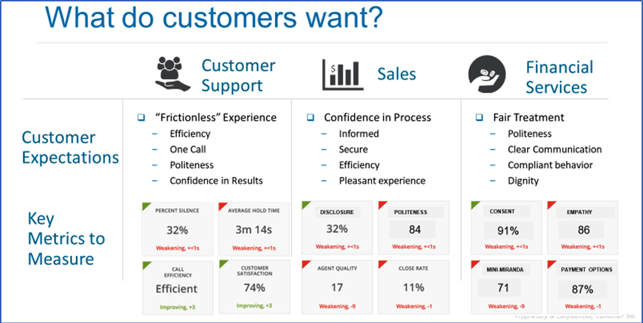In today's ultra-competitive marketplace, customers have more choices than ever before in how to acquire products and services. And, they expect the shopping experience, the buying process, and the subsequent support for those products and services to be as frictionless as possible.
That end-to-end customer experience (CX), which I view as the totality of the lifecycle between the customer and the provider, is now viewed by many organizations as the key differentiator between themselves and their competitors. In fact, a recent report by Gartner surmises that companies see themselves in an “customer experience battlefield.” Not surprisingly, 89 percent of the executive polled for that report believe that CX will prove to be the primary basis for competition in the coming years.
We've all heard and read the compelling statistics around the revenue impact of satisfying the customer. A recent McKinsey study, for example, found that e-commerce spending for new customers averaged $24.50—and more than doubled to $52.50 on average for repeat e-commerce customers. But it doesn't take a data scientist to know that is it’s easier and more profitable to retain existing customers than it is to find new ones. As the adage says, “Customers vote with their feet.” In the brick-and-mortar world, customers simply walk out and find another business that will meet their expectations.
Today, they’re also just as likely to let everyone else know how they voted by posting that poor experience on social media. Consumers are likely to post a positive customer experience on social media about 30% of the time, but tend to post about negative experiences 45% of the time, according to a recent study conducted by Dimensional Research for ZenDesk.
In today's digital world consumers rely on a variety of channels to interact with the organizations they choose to do business with. Understanding customers’ preferred contact channels and then aligning the appropriate resources and assets are essential to meeting customers’ expectations and maintaining strong relationships. Consider the contact center and how interaction analytics can help optimize the customer experience.
Achieving ideal customer outcomes is the result of getting the balance right between all the elements associated with customer’s interactions in your contact center. Interaction analytics play a powerful role in uncovering how to optimize a customer’s experience.
Common factors that can influence the customer’s degree of satisfaction when dealing with an organization’s contact center include:
- Agent competency issues
- Systematic issues (IVR, telephony, etc.)
- Process issues
- Unpredicted or predicted product, service or event issues
- Billing issues
- Technical support, password resets, etc.
Interaction analytics can uncover these issues so companies can address them. But organizations also need to recognize and respond to the unique expectations customers have based on the contact intent, such as customer support, sales, or financial services. The matrix below show some common customer expectations by function objective, along with the key performance metrics that interaction analytics measures to determine strong and weak points in agents’ activities and the impact each has on outcomes.

This is great, right? Analytics can reveal why customers are calling—and how your operations, processes, systems and, specifically, your agents are handling issues. But how can you leverage this technology to improve customer experience and outcomes? CallMiner has an online ROI calculator that can provide you with a glimpse into how interaction analytics can help optimize your contact center customer experience.
But first, let’s look at some examples of interaction analytics in action:
One company in the tourism industry using speech and text analytics was able to correlate talk and handle times and then make adjustments that led to a lift of 26% in its customer satisfaction score and increase its average revenue per booking—while simultaneously reducing its cancelation rate. As one executive in the organization said, “We turned our contact centers from an operational expense to a profit center.”
An organization in the exercise equipment industry used interaction analytics to dramatically reduce average call handle time and call abandonment rates. This, in turn, improved the company’s call/agent handling ratios. These operational efficiencies led to an 8% reduction in manpower cost per shift for headcount to manage call volumes.
The contact center is just one touchpoint where analytics can reveal opportunities to optimize CX and boost profitability in the process. So, it’s easy to see that improving customer experience across channels can lead to significant increases in customer retention rate and revenue per customer, and provide better overall outcomes.

About the Author
Brian LaRoche is Director, Account Based Marketing, and is responsible for direct and channel outbound marketing programs for CallMiner. In addition to his marketing responsibilities, he is the host and moderator of CallMiner’s popular Monthly Education Webinar series. LaRoche, a call center industry veteran, is a frequent guest speaker, panelist, and guest columnist on myriad customer service, technical, collections, sales, and leadership topics related to the analytics field.









